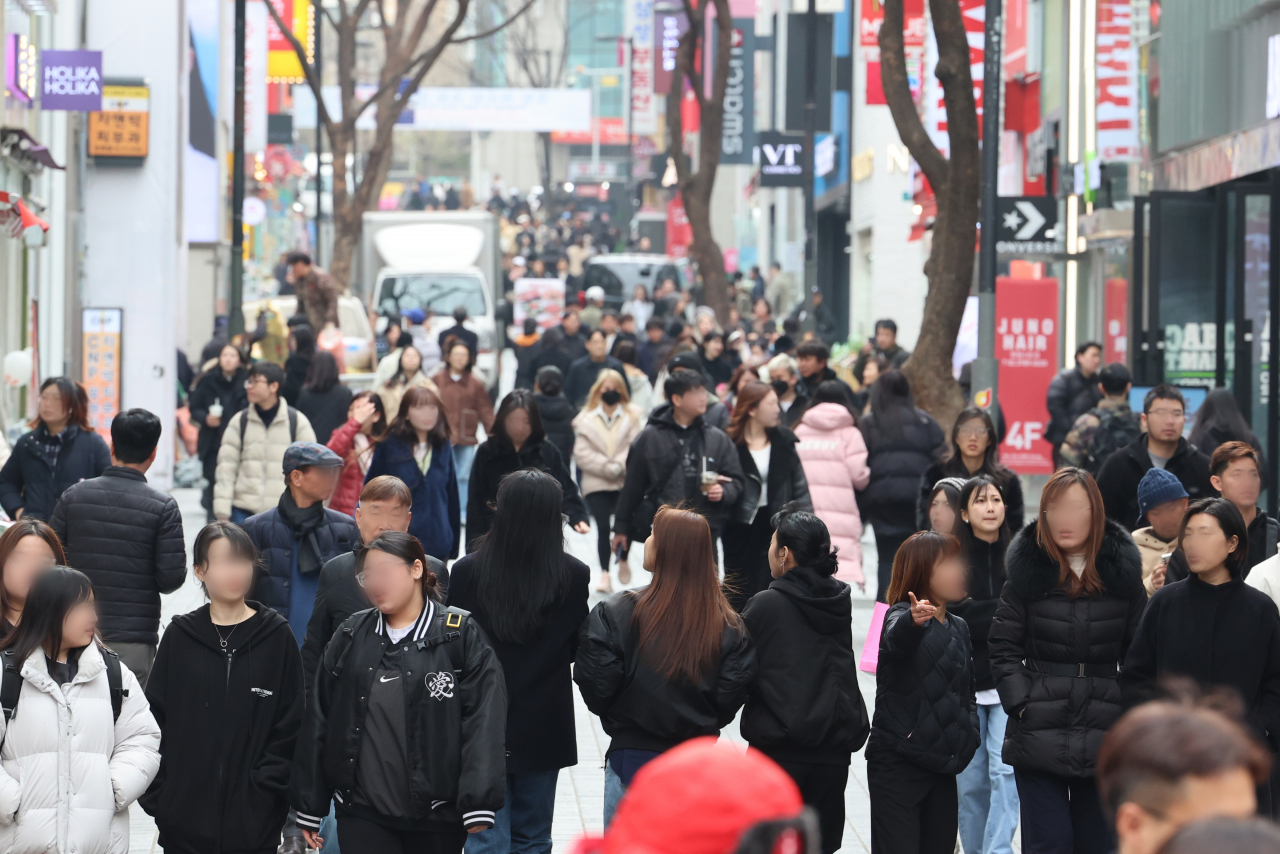Myeong-dong bustles again as retail shops fill up
From Apple to Lululemon, big-name brands flock to revive popular shopping district
By Im Eun-byelPublished : March 20, 2024 - 15:22

Though plagued by emptied-out stores and quiet streets in the wake of the pandemic, the Myeong-dong area in central Seoul is looking to reclaim its title as a top retail district in Korea, seeing a sharp drop in its vacancy rate.
Myeong-dong, a major tourist destination here, was hit severely by the lack of travelers during the COVID-19 pandemic, with its vacancy rate hitting nearly 50 percent at the end of 2021.
But with pandemic rules lifted and an increase in face-to-face transactions, the area is seeing a return of stores and visitors, with once-vacant shops and buildings quickly filling up.
Myeong-dong’s high street retail vacancy rate stood at 9.4 percent in the fourth quarter of last year, marking an on-year drop of 33 percentage points, according to a report released last month by global real estate services firm Cushman & Wakefield Korea.
The report showed Myeong-dong had the lowest vacancy rate among the six major commercial areas identified by the firm, followed by Hannam and Itaewon at 9.9 percent and Hongdae at 14.5 percent.
Other reports also hinted at Myeong-dong’s recovery. According to another major real estate service provider, CBRE Korea, the vacancy rate for medium and large-sized commercial properties in Myeong-dong stood at 27.7 percent in the fourth quarter of last year, down from 43.5 percent at the end of 2022.
“New additions of sports and fashion brands and the reopening of beauty brands are attributing to the drop in the vacancy rate,” said Claire Choi, director of research at CBRE Korea.
Bigger, better flagship stores
Myeong-dong is also seeing a change in its commerce environment as more brands are searching for larger spaces to identify themselves more effectively.
“These days, brands are searching for large-sized properties to launch flagship stores that focus more on brand experience,” said Kelly Nam, head of retail tenant advisory at Cushman & Wakefield Korea.
"The stores are more than just sales outlets as they serve as billboards for promoting the brands to the footfall population."
Major brands such as Lululemon and Apple have taken up spots on the main street across the road from Lotte Department Store’s Myeong-dong branch. The stores serve as a venue to promote the brands, rather than just being retail outlets.
The Apple store has used its space there as a performance venue. The tech giant invited top virtuosos such as pianists Lim Yun-chan and Son Yeol-eum to celebrate the launch of its app, Apple Music Classical.
Lululemon's Myeong-dong store is billed as “the largest sweat hub” in Korea by the Canadian-American sportswear brand, as it plans to use the space for community workout events.
Another large-scale store in Myeong-dong is beauty and health retailer CJ Olive Young's outlet marketed to foreign visitors, Olive Young Myeong-dong Town. It is the retailer’s largest store.
Musinsa, a popular online fashion platform, is set to launch a store Friday for its private brand, Musinsa Standard, in the area with a 1,050-square-meter retail space.
However, Myeong-dong has yet to recover fully to pre-pandemic levels, experts viewed. Though the occupancy rate is shooting up, it is yet to reach pre-pandemic levels.
Cushman & Wakefield Korea’s data suggests the high street retail vacancy rate for Myeong-dong stood at 4.5 percent in late 2019, while CBRE Korea’s figure on the vacancy rate for medium and large-sized commercial properties in the area was 8.9 percent in the same period.
"The current figures suggest vacancy is still high when compared to (the rates) of 2019. It will take some time for the area to recover to pre-pandemic levels,” said Choi from CBRE Korea.



















